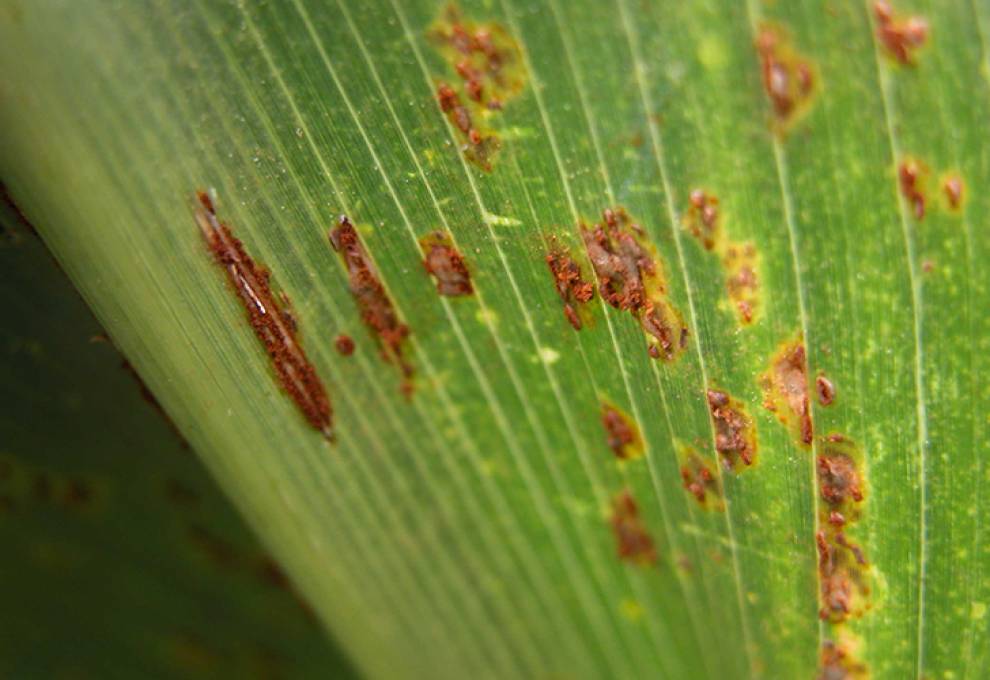
Over the years, yield loss in sweet corn due to common rust infections have been well documented. Research in 2006 in New York suggested that on a susceptible variety every 10 per cent increase in rust severity reduced yield by 2.4 to 7 per cent in processing sweet corn and 3.0 to 6.2 per cent in fresh market (Shah and Dillard, 2006).
The rust disease itself is sporadic. It is most active in temperatures of 16° to 24° C, high relative humidity and a minimum leaf wetness period of three to six hours. Hot, dry conditions may stop an infection in its tracks, but as temperatures cool off in August/ September the levels of disease may resurge in the later crop.
While many popular commercial varieties have good levels of tolerance to this disease, when it does appear, it begs the question: “should I be spraying?” In the past we have used a spray threshold of six pustules per leaf. But it was often hard to characterize this level in an actual field setting. Shah and Dillard found that in a susceptible variety, rust treatments were cost effective and reduced disease severity when applied at 1-10 per cent infection.
University of Guelph researcher, Cheryl Trueman, studied rust thresholds in sweet corn, using the moderately susceptible variety “Temptation,” over a three year period from 2012 to 2014. She found that yield response to fungicides varied from year to year. In these trials, a single fungicide application at 3-5 per cent leaf area infected using Headline, Quilt or Vertisan can reduce disease severity on the leaves. Two applications of Bravo (applied at 3-5 per cent infection and 10 days later) also reduced disease severity.
Despite the reduction in disease severity, this did not translate into increased yield in 2014. In 2013, three of the treatments resulted in a yield increase (tons/acre). See Table 1, Total and mature sweet corn yield after treatment with fungicides at 3-5 per cent threshold for management of common rust, Ridgetown, ON, 2013 and 2014. Only the disease free treatment (Quilt applied four times) resulted in an increase in the number of mature cobs harvested (doz/acre). However, this program may not be economical in a commercial operation. Based on the Ridgetown
experience, in a moderately susceptible variety, it may not pay to spray. Spray decisions should be based on the susceptibility of the variety and the weather conditions at the time rust appears in the crop. Under hot, dry conditions it is less likely to become yield limiting.
However, if the forecast conditions are cooler and humid, then there will likely be a benefit to spraying susceptible varieties at the 3-5 per cent infection level.

Add new comment